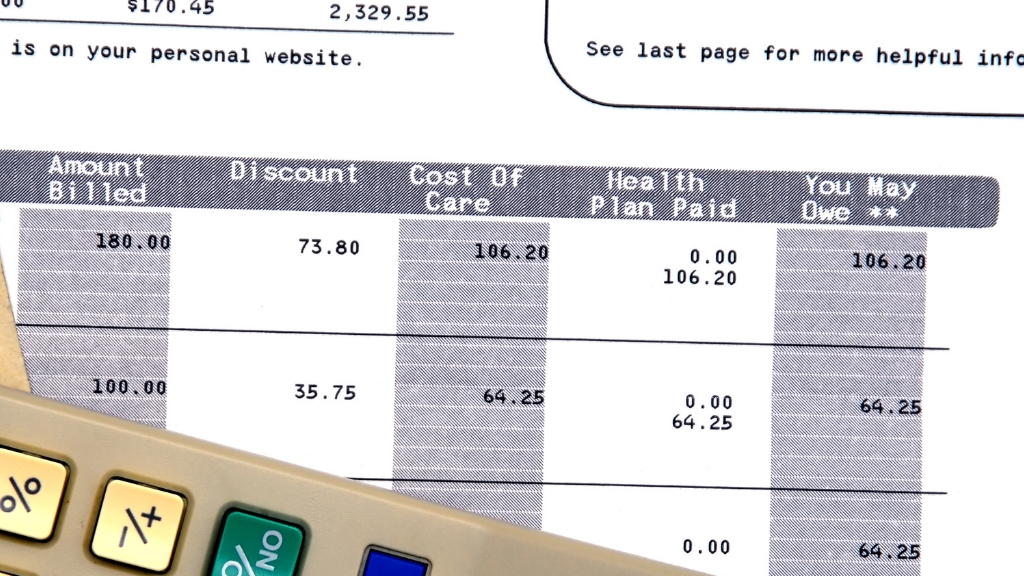The Confusing New Hospital Law + Understanding Your Hospital Expenses
6 minute read
If medical bills seemed confusing to you before, they might be more confusing now. As of January 1, 2019, a new federal rule requires hospitals to make some changes in their policies. The goal is to make it easier for patients to understand their bills and to obtain access to their medical records.
The new billing requirement is designed to provide more transparency so individuals can go online and see procedure prices. The problem is the sticker shock associated with virtually all medical procedures, supplies, tests, and other charges. But these astronomical prices that hospitals list for their services are not the prices that consumers, or patients, will have to pay.
Insurance companies don't pay the list price either, they negotiate off the list price. It’s expected that this is where a lot of confusion will arise.
The Goal of the New Price Postings Law
Section 2718(e) of the Public Health Service Act, which is part of the Affordable Care Act, requires each hospital to establish and publish a list of standard items and services and their respective charges. This list needs to be updated annually to keep it current.
Some states already required some pricing transparency, but states participating in those requirements are not exempt from the more thorough federal rule.

The purpose of price transparency, or what’s commonly referred to as a chargemaster, is to give patients information regarding the costs of their healthcare and an idea of what their potential financial responsibility might be. There is also hope that having this level of transparency will allow patients to “shop” their healthcare by being able to compare charges for similar services across other hospitals.
Why Are Hospital Prices So Confusing?
In the most basic explanation possible: your healthcare provider charges you for a service, your insurance pays part of that fee, and you are required to pay the rest as an out-of-pocket charge. Out-of-pocket simply means what you have to pay personally.
But even this simple breakdown isn’t addressed in the new law. The prices hospitals pay are the list prices and not your out-of-pocket price, so knowing what your insurance company will be billed is not necessarily as beneficial as knowing what you’d be required to pay.
Of course, it gets much more complicated than that because the list price for a procedure isn’t always what the charge will actually be. If a patient has Medicare, for example, Medicare has set its own fee schedule, based on what they believe are fair rates for specific medical treatments, devices, etc. Medicare will not be charged the list price, it will be charged their own price.

Not only does Medicare have some reduced rates, but many insurance companies also operate similarly. If your insurance company and your healthcare provider are working together in a health cooperative, the rates will change again.
Making it even more confusing, uninsured people often get discounts because those can be negotiated with the hospital to make the services more affordable.
Finally, most hospitals have financial aid programs that can knock down prices even further.
When all of this comes into play, it’s easy to see that a list price is rarely going to accurately reflect the final price either charged to the insurance company or paid by the patients themselves.
| Related: 80% of Medical Bills Have Mistakes? 7 Tips + How to Fix Errors |
How to Better Understand Hospital Prices
If you really want to shop and compare healthcare prices, the best way to do it is through some research.

The hospital will have a financial department that deals with patients, insurance companies, and outside programs. You may even have to find a financial counselor that works with the hospital. Once you have their assistance, they can look at your case on a customized basis, taking your insurance and financial situation into consideration. This will give you a better idea of your potential expenses.
For an even more accurate estimate of your costs, take the information provided to you by the hospital’s financial counselor and contact your insurance company. The insurance company should have greater insight on what they’ll actually cover and how much.
Knowing the following information is key to learning more about your hospital expenses:
♦ Ask for the common procedural terminology (CPT) code for your proposed procedures.
♦ Ask if there are additional fees. Sometimes they’ll give you the code for your surgery but forget to include pricey “extras” like anesthesia.
♦ Know your insurance name and plan details.
♦ Ask for a “cash price” to compare that with your insurance out-of-pocket price.
♦ Call several providers with this information and see what their cash price is versus your out-of-pocket price with them.
♦ Try to get cost estimates in writing.
The Bottom Line
While there is concern that published hospital prices will confuse patients as they are almost never the amount paid, that concern is probably a bit overstated.

Section 2718(e) previously required hospitals to make their chargemaster information public or to provide them for viewing upon individual request. The new changes address the belief that the previous version of the bill did not provide enough transparency. Changes require annual updating and publishing on the internet, in a readable format.
That being said, if someone wanted to see the prices of procedures prior to the changes in Section 2718(e) going into effect they could, and the prices would have appeared just as inflated and confusing as they do now. The new changes make it easier to find this information, and they make it potentially easier to comparison shop, but they do nothing to add to the confusion or subtract from previous confusion about prices.
As a patient or consumer, if you want to better understand your medical bill or potential future bills, it’s best to discuss your charges with both your insurance provider and the hospital’s billing department. Doing this will give you both sides of the picture, and you’ll be able to make more informed decisions.












